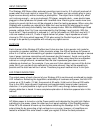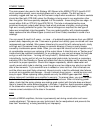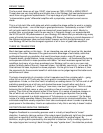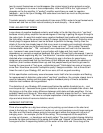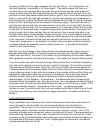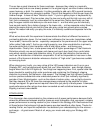
swinging is confined to the region between the floor and ceiling -- isn't hitting either one --
the lever (amplifier) is operating in its "linear region". This simply means that there is a
constant ratio to the leverage: push the small end up and down two feet and the big end
moves six feet; swing the short end three feet and the long end moves nine feet. So in this
example the ratio (also called amplification factor or gain) is three. And if we're swinging this
lever in a room that's ten feet high, we want to maximize our swinging room (headroom) in
both directions by locating the fulcrum half way between the floor and the ceiling. Engineers
would call this "operating around the mid-point of the linear region". But what if we want to
push the short end up and down four feet and the room is still only ten feet high? obviously
the big end is going to slam into the ceiling because it can't move any farther. And it's going
to stay there for a moment before it begins to swing down toward the floor. Then again, it's
going to crash into the floor and stay there for the period of time it would have taken to go
one foot further down and back before it starts rising again. This is what happens when an
amplifier runs out of power. And clipping distortion occurs because the extra swing dictated
b the "overdriven" movement of the short end cannot be achieved by the big end and the
"linear ratio" breaks down. In an amplifier, the onset of clip is the point where the distortion
increases radically by generating various added harmonics -- or overtones-that weren't
present in the original signal.
Now let's carry this analogy a little further and we can contrast the way clipping occurs in
tube and solid state amplifiers. Picture this same ten foot high room now with a padded
rubber floor and ceiling. The action of the lever's long end slamming into the elastic rubber is
that it gradually comes to rest before pulling away -- not suddenly as though hitting concrete.
True, the simple linear ratio of motion no longer holds (and so there is distortion) because a
four inch motion applied to the short end won't result in the proper 12 inch motion once the
long end has contacted the rubber ceiling but it will move at least a few inches against the
increasing resilience of the spongy rubber. And this is akin to the soft, compression action of
a good tube amp when it clips, while the example of the concrete ceiling and floor fairly well
represents a typical solid state amp running out of headroom. The motion ratio remains
perfectly constant right up to the onset of clip where its travel is abruptly stopped and
restarted again. It's this softness -- or abruptness -- that determines which harmonics are
generated when the amplifier clips. And you know from your own experience with plucking a
string how much the harmonics are determined by the way you set the string in motion. If the
string is accelerated abruptly -- like plucking it with a dime -- you get strong upper
harmonics, even if you pluck softly. But if you use something soft like the flesh of your thumb
to set the string vibrating, there are almost no upper harmonics -- no matter how hard you
thumb it.
LOW ORDER DISTORTION
As you probably know, harmonics (also called overtones) are what make up the timbre of
each instrument so that the A440 of a clarinet sounds different from the A440 of a
saxophone. The sax tone is rich in harmonics while the clarinet sound is almost pure
fundamental without overtones. Certain harmonics occur naturally in music -- both in the
overtones of timbre and as component notes in the harmony of chords. These overtones are
often called the "low order" or "even order" harmonics such as the 2nd, 3rd and 4th. These
overtones relate to the fundamental note by being one octave above (double the frequency);
an octave and a fifth above (called the "quint" in pipe organs, an octave and a half above)
and two octaves above for the 4th.
7





